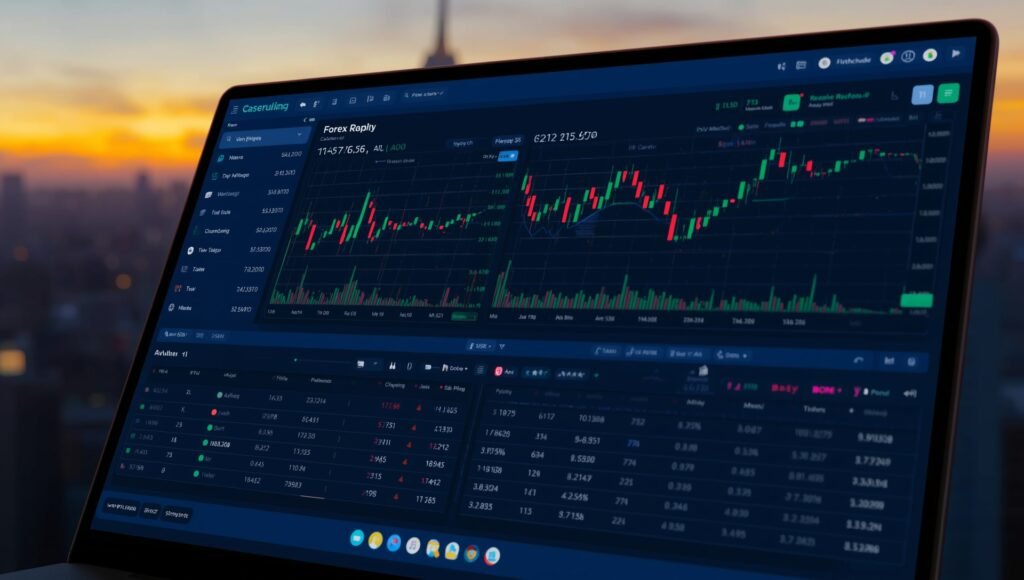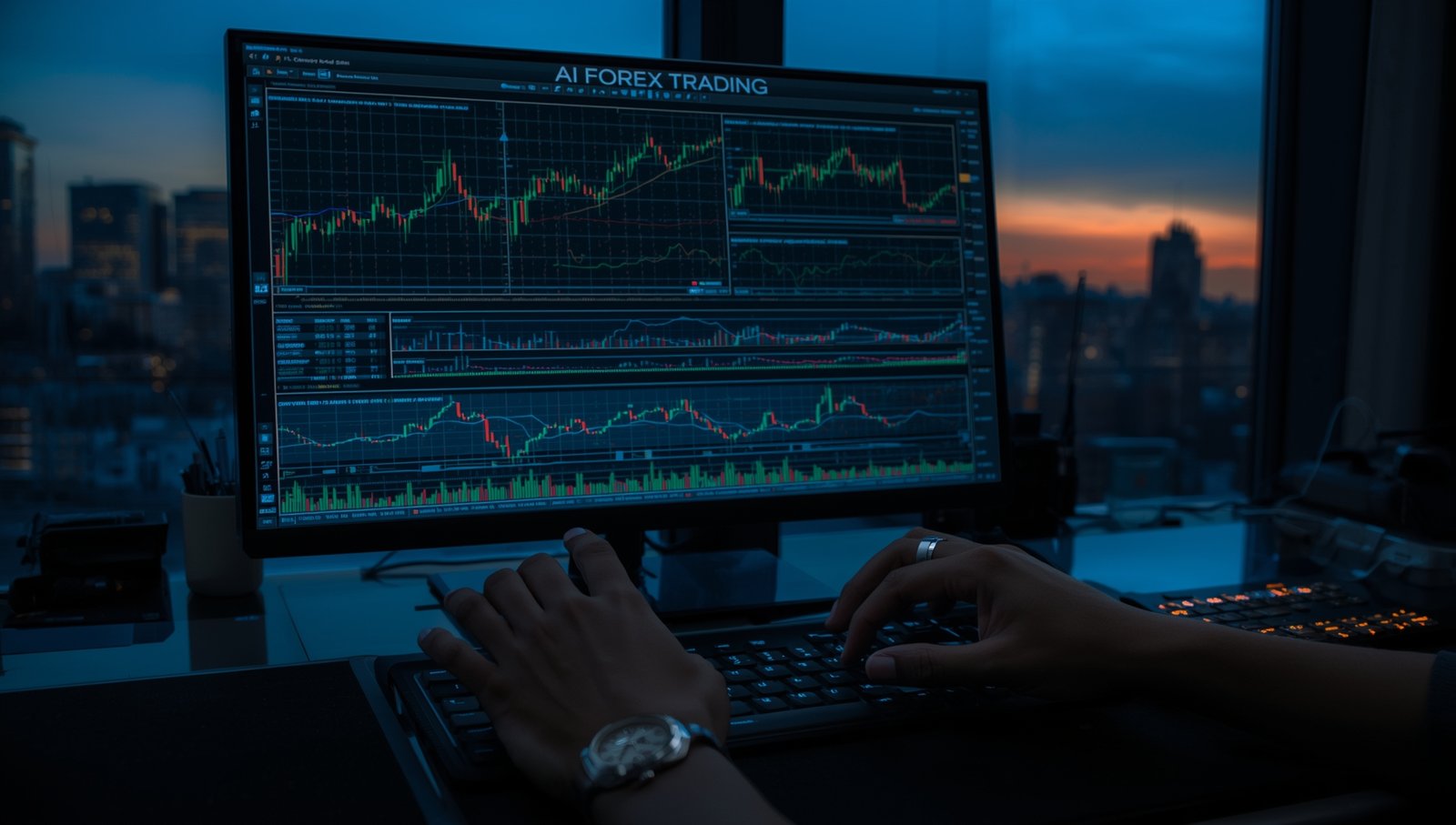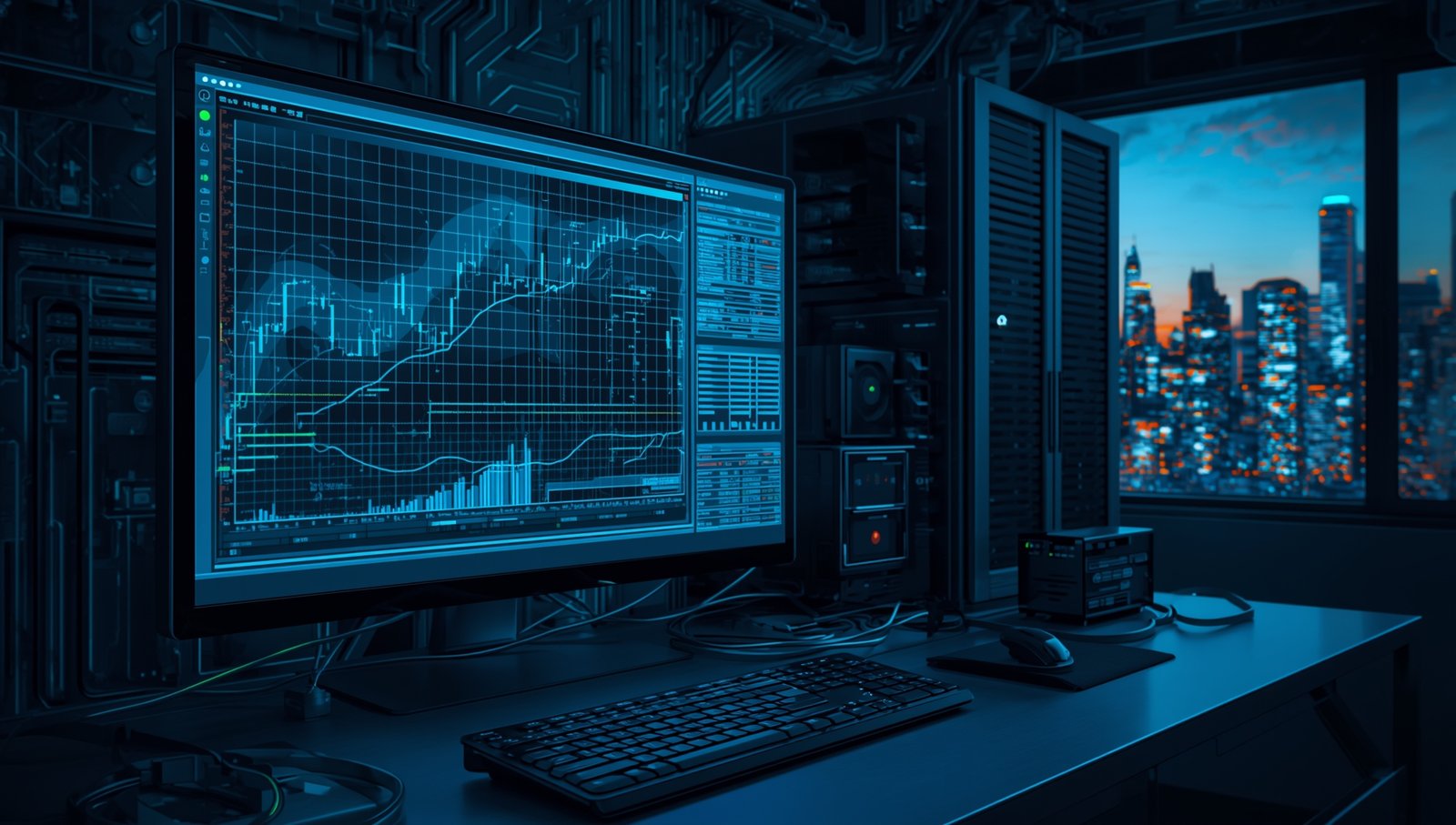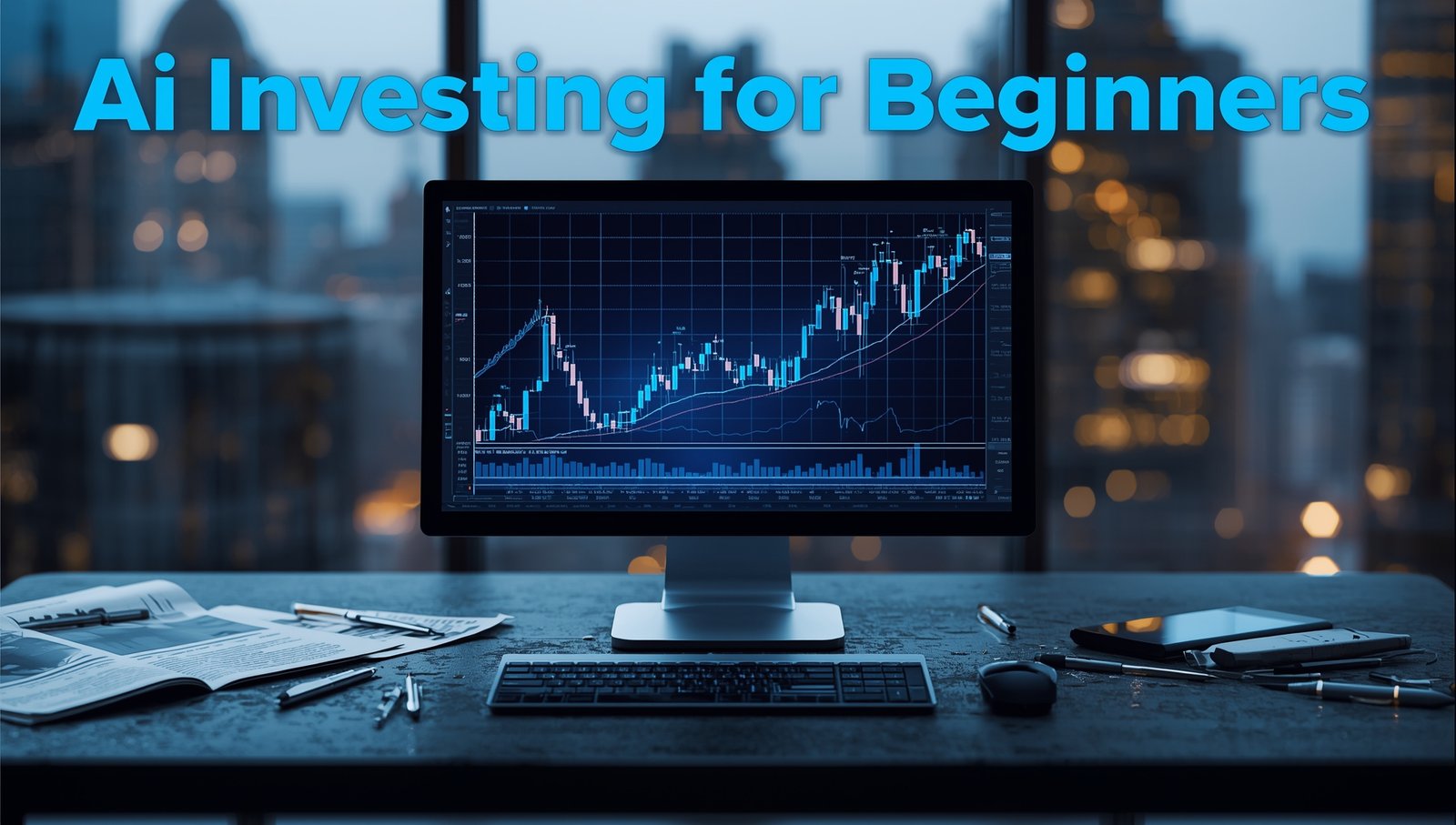Financial markets have transformed dramatically over the past two decades. Technology now drives a significant portion of trading activity across global exchanges. Algorithmic trading software has become a fundamental tool for institutional investors, hedge funds, and increasingly, individual traders seeking to execute strategies with speed and precision that human traders cannot match.
Algorithmic trading software uses computer programs to execute trades automatically based on predefined rules and market conditions. These systems analyze price movements, volume data, and other market indicators to identify trading opportunities and place orders without human intervention, operating at speeds measured in milliseconds.
Understanding the Core Mechanics
Algorithmic trading software operates by converting trading strategies into mathematical models and computer code. These programs monitor market data continuously, searching for conditions that match their programmed criteria. When specific parameters are met, the software executes trades automatically according to predetermined instructions.
The software connects directly to brokerage platforms through application programming interfaces (APIs). This direct connection allows the algorithm to receive real-time market data and submit orders instantly. The speed advantage is substantial—algorithms can analyze multiple markets simultaneously and execute trades in fractions of a second, far faster than manual trading methods.
Modern algorithmic trading systems incorporate various data inputs beyond basic price information. Volume patterns, order book depth, volatility measurements, and even news sentiment can factor into trading decisions. The complexity of these systems varies widely, from simple rule-based programs to sophisticated machine learning models that adapt to changing market conditions.
Types and Strategies Employed
Different algorithmic trading approaches serve distinct purposes in financial markets. Understanding these categories helps clarify how traders and institutions deploy this technology.
Trend-following algorithms identify and capitalize on sustained price movements. These systems use technical indicators like moving averages, channel breakouts, and momentum oscillators to detect directional trends. The strategy assumes that established trends tend to continue, allowing the algorithm to enter positions aligned with the prevailing direction.
Mean reversion strategies operate on the principle that prices eventually return to average levels after extreme movements. When an asset’s price deviates significantly from its historical mean, these algorithms take positions expecting a correction. Statistical analysis determines the threshold for what constitutes an actionable deviation.
Arbitrage algorithms exploit price discrepancies between related instruments or across different markets. These systems identify temporary mispricings and execute simultaneous buy and sell orders to capture risk-free profits. The opportunities typically last only moments, making automated execution essential.
Market-making algorithms provide liquidity by continuously quoting both buy and sell prices. These systems profit from the spread between bid and ask prices while managing inventory risk. High-frequency trading firms commonly employ this approach, executing thousands of trades daily.
Companies developing best AI trading bot solutions increasingly incorporate artificial intelligence and machine learning capabilities. These advanced systems can identify complex patterns in market data that traditional rule-based algorithms might miss, though they require substantial computational resources and training data.
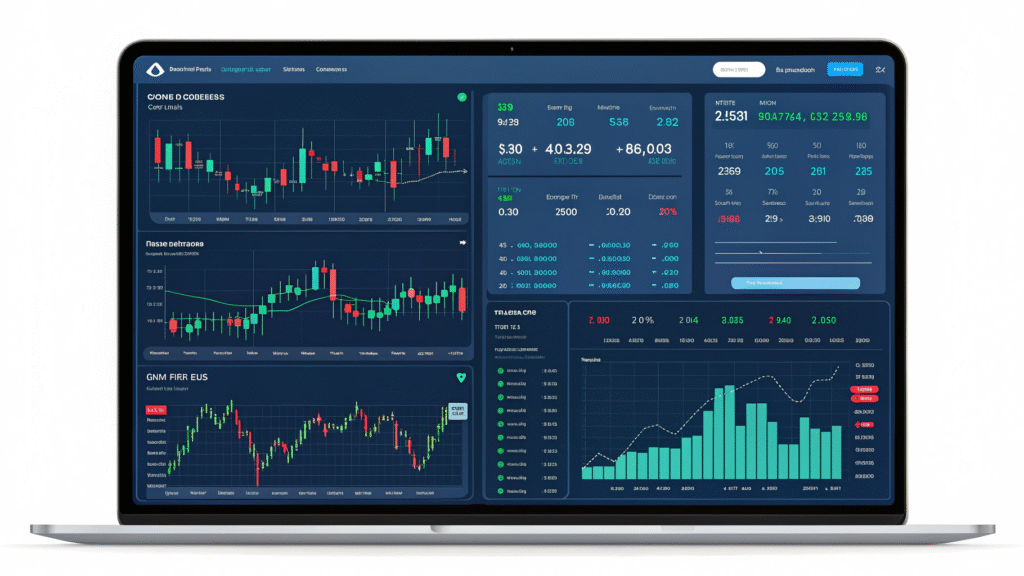
Advantages for Market Participants
Algorithmic trading software provides several meaningful benefits that explain its widespread adoption across financial markets.
- Execution speed: Algorithms process information and place orders in milliseconds, capturing opportunities that disappear quickly in fast-moving markets.
- Emotion elimination: Automated systems follow their programming without fear, greed, or hesitation, maintaining discipline even during volatile conditions.
- Backtesting capability: Traders can test strategies against historical data to evaluate potential performance before risking actual capital.
- Consistency: Algorithms apply the same criteria to every trading decision, avoiding the inconsistency that affects human judgment.
- Simultaneous monitoring: Software can track multiple markets, instruments, and timeframes concurrently, expanding the scope of trading activity.
- Reduced transaction costs: Optimized execution algorithms can minimize market impact and achieve better average prices on large orders.
These advantages have made algorithmic systems particularly valuable for institutional investors managing large portfolios. The ability to execute complex strategies across numerous securities simultaneously provides operational efficiency that manual methods cannot replicate.
Risks and Limitations to Consider
Despite the benefits, algorithmic trading software presents challenges and risks that users must understand and manage appropriately.
Technology failures pose a significant concern. Software bugs, connectivity issues, or hardware malfunctions can result in unintended trades or missed opportunities. The 2012 Knight Capital incident, where a software glitch caused $440 million in losses within 45 minutes, illustrates the potential consequences of technical failures.
Over-optimization represents another common pitfall. Strategies that perform exceptionally well on historical data may fail in live markets because they were fine-tuned to past conditions rather than underlying market principles. This “curve fitting” creates systems that look profitable in backtests but lack robustness in real-world application.
Market conditions change over time, potentially rendering previously successful algorithms ineffective. Economic cycles, regulatory changes, and shifts in market structure can all impact strategy performance. Algorithms require ongoing monitoring and adjustment to remain viable.
All trading involves risk, and algorithmic systems do not eliminate the fundamental uncertainty of financial markets. Past performance is not indicative of future results. Even well-designed algorithms can experience losing periods, and there is no guarantee of profitability.
Individuals considering algorithmic trading software should carefully evaluate their risk tolerance and understand that automated systems require proper risk management protocols. Setting appropriate position sizes, stop-loss levels, and maximum drawdown limits remains essential regardless of the execution method.
Practical Implementation Considerations
Successfully deploying algorithmic trading software requires attention to several practical factors beyond strategy design.
Infrastructure requirements vary based on trading approach. High-frequency strategies demand low-latency connections, powerful computing resources, and proximity to exchange servers. Longer-term systematic strategies may function adequately with standard internet connections and consumer-grade hardware. Understanding the technical requirements for your specific approach prevents costly mismatches between strategy and infrastructure.
Brokerage selection impacts execution quality and costs. Not all brokers support algorithmic trading, and those that do offer varying API capabilities, commission structures, and execution speeds. Evaluating these factors helps ensure your broker can properly support your algorithmic trading activities.
Risk management protocols must be programmed into the system. Maximum position sizes, daily loss limits, and circuit breakers that halt trading during abnormal conditions provide essential safeguards. These controls help prevent catastrophic losses during unexpected market events or system malfunctions.
Regulatory compliance deserves careful attention. Different jurisdictions impose varying requirements on algorithmic trading activities. Some markets require registration, testing, or risk controls for algorithmic systems. Understanding and following applicable regulations protects traders from legal complications.
Monitoring remains necessary even with automated systems. Regular review of trade logs, performance metrics, and system health indicators helps identify issues before they cause significant problems. Algorithmic trading does not mean unattended trading.
For those exploring solutions like Optimus AI, understanding that users set their own risk levels is important. These tools provide automation and analysis capabilities, but individual traders maintain responsibility for their trading decisions and outcomes.
The Evolving Landscape
Algorithmic trading continues to evolve as technology advances and markets develop. Machine learning and artificial intelligence represent the current frontier, with systems that can identify patterns and adapt strategies without explicit programming for every scenario.
Cloud computing has democratized access to powerful computational resources. Individual traders can now rent processing power previously available only to large institutions, leveling the playing field to some degree. This accessibility has contributed to growth in retail algorithmic trading.
Alternative data sources—satellite imagery, social media sentiment, credit card transactions—are increasingly incorporated into algorithmic strategies. These non-traditional inputs provide information that may not yet be reflected in price movements, potentially offering an edge to traders who can effectively process this data.
Regulatory scrutiny of algorithmic trading has intensified following several market disruptions attributed to automated systems. Exchanges and regulators have implemented circuit breakers, testing requirements, and other controls designed to reduce systemic risk from algorithmic activity. These measures continue to evolve as authorities balance innovation with market stability.
The competitive dynamics of algorithmic trading create constant pressure for improvement. As more participants adopt similar strategies, the profit opportunities from any given approach tend to diminish. This arms race drives ongoing innovation in strategy development and technology infrastructure.
Questions about whether Korvato scam concerns are valid highlight the importance of due diligence when selecting any trading technology provider. Evaluating company transparency, user reviews, and regulatory compliance helps distinguish legitimate tools from questionable offerings.
Making Informed Technology Decisions
Algorithmic trading software represents a powerful tool that has fundamentally changed how financial markets operate. The technology offers genuine advantages in execution speed, consistency, and the ability to implement complex strategies across multiple markets simultaneously. These benefits explain why algorithmic approaches now account for a substantial portion of trading volume in major markets.
However, the technology does not guarantee success. Effective algorithmic trading requires sound strategy development, proper risk management, adequate infrastructure, and ongoing monitoring. The same discipline that applies to manual trading remains essential in automated environments. Understanding both the capabilities and limitations of these systems allows traders to make informed decisions about whether and how to incorporate algorithmic approaches into their activities.
Financial markets will continue to evolve, and algorithmic trading technology will evolve with them. For finance professionals considering these tools, focusing on education, realistic expectations, and appropriate risk management provides the foundation for potentially beneficial use of this technology.
Disclaimer: This article is for educational and informational purposes only. It does not constitute financial advice, investment advice, or trading advice. Trading cryptocurrencies involves significant risk, and you should only trade with money you can afford to lose. Always do your own research and consult with a licensed financial professional before making any investment decisions.
